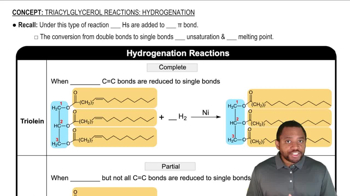a. How many alkenes could you treat with H2, Pd/C to prepare methylcyclopentane?
b. Which of the alkenes is the most stable?
c. Which of the alkenes has the smallest heat of hydrogenation?
 Verified step by step guidance
Verified step by step guidance Verified video answer for a similar problem:
Verified video answer for a similar problem:



 0:48m
0:48mMaster The definition of hydrogenation. with a bite sized video explanation from Johnny
Start learning